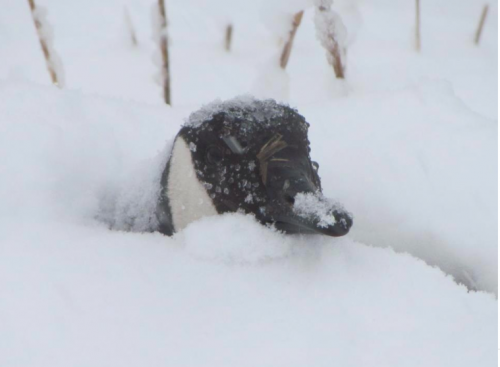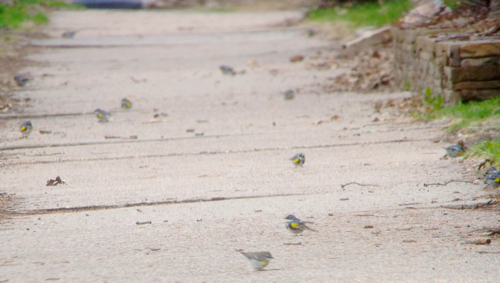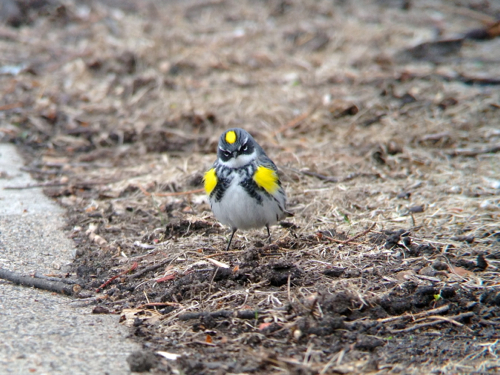So a couple of seeks ago we had some snow in April in Minnesota and people freaked out about birds. Yeah, I know I live in Minnesota and we get a ton of snow, but snow in April is brutal even for us. But people worried because we had a ton of robins in our area, some were birds that spent the winter and were ready to head north and couldn't. Others were birds just arriving on territory and aggressive to the birds still here. Everybody was bitter and prone to fights because that's what happens when there's a spring snow. I wasn't too worried because birds like robins are tough, robust birds. They can take a snow storm.
Last week we have a few 70 degree days and it was beautiful. Most of the snow melted. Migration progressed. I saw tree swallows and chimney swifts and relaxed that they had survived a crazy spring migration...then 15 inches hit the southeastern part of the state yesterday and more today. Now I am worried. Crazy images are showing up on Facebook like this one from Greg Munson:
Here's the description with the photo, "Greg, Munson, Quarry Hill Nature Center naturalist in Rochester. The mother goose has been sitting on her 9 eggs for 2 weeks and she wasn't about to let a little snow interrupt her task."
I linked to it on the Birdchick Facebook page and people were wowed and concerned. Someone suggested clearing the snow off of her. That's a risky idea--number one a goose on the nest is dangerous to you. Number two, she most likely would flush, exposing the eggs to snow and would she come back in time to keep them warm enough to hatch.
This morning there's an email from Greg that reads, "The goose is still surviving in the snow and it appears water may have even gone down an inch overnight. Hard telling what the melt will do to pond levels, probably starting tomorrow. "
We'll have to wait and see if the eggs hatch.
Though we had no snow in Minneapolis yesterday (different story today), it was too cold for insects. We had a yellow-rumped warbler fallout in my neighborhood.
Yellow-rumps were everywhere! They covered the streets and the sidewalks gleaning any sort of food they could. Peter Nichols posted this photo of yellow-rumps covering his feeder. And this video of a yellow-rumped warbler feeding frenzy:
http://youtu.be/bZcXVmomngw
I know some of these birds can take it, but I do worry about the purple martins and the chimney swifts who have to wait it out under cover and not eat until any flying insects finally come out. Will we lose some of those birds? No doubt? Can their overall population take that loss? Usually, yes. But birds face so many challenges: habitat loss, cats, cellphone towers, windows. It's a vexing winter for sure.
I do take some comfort in the yellow-rumped warblers and their sassy attitude. So cute, so fierce, they almost look as though they defy winter and all it's obstacles. Here's hoping it ends soon without the appearance of White Walkers.



